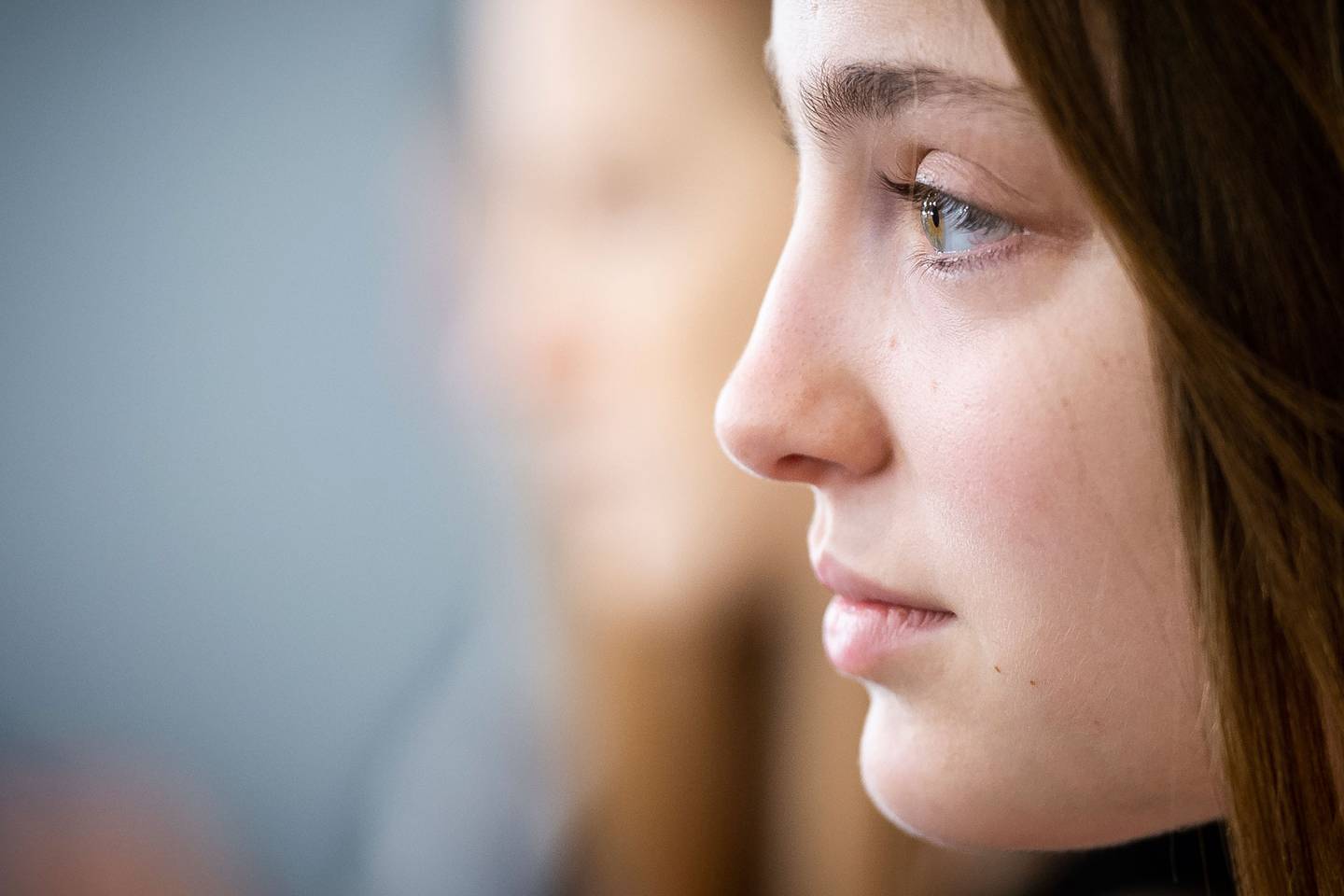المقال: 9 Skin Experts On How To Treat Acne Scars

9 Skin Experts On How To Treat Acne Scars
Tackling acne and finding a treatment that works for you can be a rewarding experience, but often the scars left behind can be just as much a knock to the sufferer's confidence as the spots themselves. From boxcar scars to rolling scars, toothpick scars to keloids, the marks left by acne need careful treatment if you're looking to reduce their appearance over time. Here, nine skin experts share their advice on treating acne scars.
Linda Blahr
National head of training and science at Skinceuticals
“The skin’s texture becomes rough, and post-inflammatory hyperpigmentation (PIH) can linger long after blemishes subside. The Skinceuticals Blemish + Age line-up is an anti-ageing, anti-blemish powerhouse. This potent, oil-free treatment is designed to diminish imperfections while correcting signs of ageing and scarring. The combination of dioic acid, capryloyl salicylic acid, and salicylic acid controls sebum production, reduces post-blemish hyperpigmentation, and provides targeted, lipid-soluble exfoliation. Glycolic acid and citric acid minimise fine lines and wrinkles, smooth rough texture, and improve irregularities. I would also suggest a Dermapen or Dermaroller treatment (every two to three months) to treat deeper acne scars properly. This is what we call ‘integrated skincare’.”
Debbie Thomas
Facialist and skincare expert
“The type of scarring present will affect the treatment choice and the possible results. Acne scars can be very superficial (flat) and be red or brown marks which are quite easy to improve. Deeper, rolling scars which leave shallow dips in the skin 2 to 5 millimeters wide can normally be improved 30 to 70 percent. Ice pick scars, which are much deeper but only 1 to 2 millimeters wide, are the most difficult to improve. Most scarring treatments will leave the skin looking red, bumpy or scaly for two to five days after the treatment, so the treatment does need to be planned. I always recommend the application of Oxygenetix Foundation which can be used straight after all skin treatments, not just to cover the redness but also to help the skin perform optimally. The most common treatments for scaring are lasers, micro needling, and peels. We also offer the Enerjet treatment which shoots a high-pressure blob of liquid into the scar to break it up more effectively. All of the treatments will need to be repeated several times for up to a year, in order to see results, as they all work by re-injuring the scar tissue forcing it to repair again. Every person responds very differently to treatments depending on their own skin's repair process. I always get the best results by combining several types of treatment - for example, a medium peel, with micro needling and mesotherapy will give a much better result than just micro needling.”
Susanne Kaufmann
Founder of Susanne Kaufmann
“With acne, it’s important to get a regular facial. Here, we usually do the base treatment with lymphatic drainage. As long as the acne scars are relatively fresh, we recommend an ultrasound treatment and the weekly use of our Enzyme Peel. If the scars are older, you cannot improve or remove them naturally.”
“Having suffered from acne myself, I can vouch for my comments. The best treatment for acne scarring is any form of resurfacing. The one I used and continue to use in treatments is Fractional Radio Frequency by Venus Viva. I then get my clients to use my at-home micro needling kit for added results and maintenance. It’s such an amazing result. Fractional every four to six weeks and my kit once per week in between sessions.”
Lou Riby
Managing director at Elemental Herbology
“The three main steps we would recommend when treating acne scars and blemishes are as follows. First, use natural AHAs, which are a great way to gently exfoliate and reduce red marks. Elemental Herbology Facial Glow Radiance Peel uses natural AHAs from papaya, apple, and orange as well as jojoba beads for smooth and soft skin. The second step is to reduce pigmentation and help repair the skin. Retinoids (pure vitamin A) are a fantastic way to address pigmentation and skin damage. We use Granactive Retinoid in our Vital Glow Overnight Resurfacing Cream to dramatically stimulate cell turnover, reduce blemishes, pigmentation and skin imperfections and to deliver a healthy and radiant glow. Finally, niacinamide is extremely effective in soothing and strengthening the skin while improving the skin’s barrier function. This restoring ingredient helps to visibly improve the appearance of enlarged pores, uneven skin tone, and dullness.”
Nausheen Qureshi
Founder of Elequra
“If you have a darker skin type, your acne scarring will take longer to treat because of melanogenesis and how pigmentation occurs in the skin. It is also harder to treat in the summer. I recommend using a vitamin C serum once a day and exfoliating once a week with a gentle lactic acid-based peel like Elequra Intense Restore Mask. Gentle peels formulated in this way help to increase cell turnover safely and effectively. I'd ensure to always use an all-around sunscreen and keep reapplying and to avoid direct sunlight on the areas of scarring.”
Dr. Stefanie Williams
Cosmetic dermatologist and founder of Eudelo clinic
"Some people develop raised, overgrowing scars (hypertrophic scars or keloids) after surgery, trauma or even minor inflammations arising from folliculitis or acne. The earlier overgrowing scars are treated the better the chances of a good therapeutic outcome. As with any scar, they won’t disappear completely, but we can flatten them significantly and improve their appearance with treatment. Common treatments for both hypertrophic and keloid scars are injections with potent steroid solutions, plus topical at-home treatment. This is performed at the Eudelo clinic by one of our dermatologists.”
Dija Ayodele
Aesthetician and founder of Black Skin Directory founder
"For deeper scarring - for example, ice-pick scars, rolling scars - treatments that stimulate collagen to re-plump the skin are beneficial. Microneedling and laser work well too, but they must be performed on the least aggressive settings so as not to create any further inflammation or PIH. One should expect several sessions for the best results and appearance in skin texture to improve. Hyaluronic acid-based fillers like Juvaderm are also a discreet option on black skin to plump from the inside and give a smoother textural appearance to skin.”
Dr. Costas Papageorgiou MD FACS
UK Medical Director for New York Dermatology Group
“For acne scarring, I recommend a multi-layered approach. First, starting with sessions of Lasergenesis to activate the fibroblast metabolism. This remodels the collagen layout within the scarring itself. As a next step, I suggest Limelight IPL, multi-wavelength light energy that reduces redness and skin tone irregularities. Following this, I would suggest we proceed with Collagen Induction Therapy (Skinpen medical grade micro-needling) to boost the skin’s recovery reaction and soften any indentations on the skin’s surface. As a final step, hyaluronic acid gel filler can be used. It functions as a supportive and volumizing matrix to smooth any contours.”
Source:
